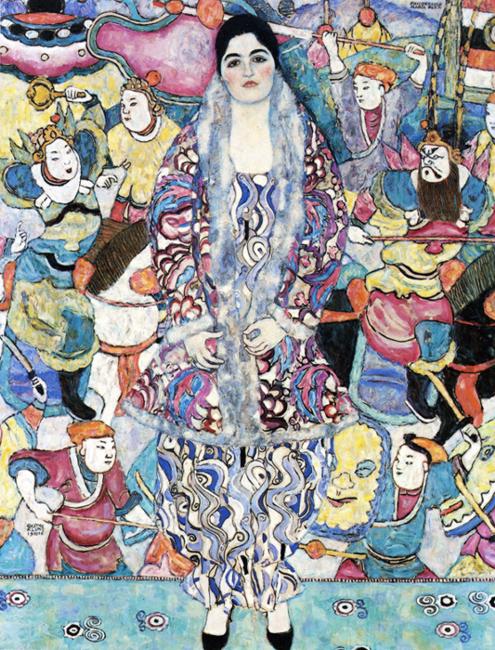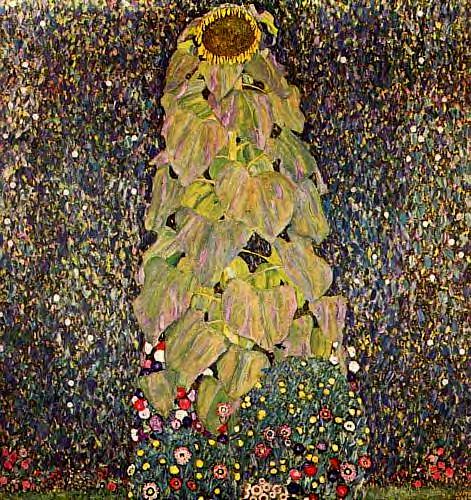 |
| Gustav Klimt in a Blue Smock by Egon Schiele 1913 |
This is part three of a three-part post on the works of Austrian artist Gustav Klimt. For biographical notes on Klimt see part one.
 |
| 1907-8 Hope II oil, gold and platinum on canvas |
 |
| 1909 Judith II oil on canvas |
 |
| 1909 Lady with Hat and Feather Boa |
 |
| 1909 The Tree of Life |
 |
| 1910 Lady with Back Feather Hat |
 |
| 1910 Schloss Kammer on the Attersee IV oil on canvas |
 |
| 1911-12 Farm Garden with Crucifix |
 |
| 1912 Apple Tree |
 |
| 1912 Avenue in Schloss Kammer Park oil on canvas |
 |
| 1912 Mäda Primavesi oil on canvas |
 |
| 1912-13 The Virgins oil on canvas |
 |
| 1913 The Church in Cassone |
 |
| 1913-14 Portrait of Eugenia Primavesi oil on canvas |
 |
| 1914 Portrait of Elisabeth Bachofen Echt |
 |
| 1916 Death and Life oil on canvas |
 |
| 1916 Fredericke Maria Beer oil on canvas |
 |
| 1916 Garden Path with Chickens oil on canvas |
 |
| 1916 Houses in Unterach on the Attersee |
 |
| 1916-17 The Friends oil on canvas |
 |
| 1917-18 Adam and Eve |
 |
| 1917-18 Portrait of Johanna Staude |
 |
| 1917-18 The Bride |













































